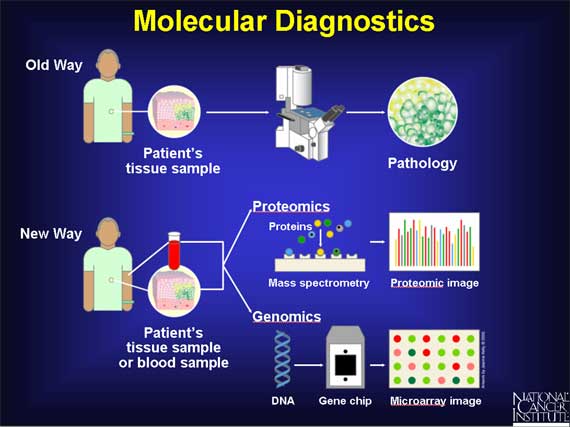|
Before molecular diagnostics, clinicians categorized cancer cells according to their pathology, that is, according to their appearance under a microscope.
Borrowing from two new disciplines, genomics (gee-no-micks) and proteomics (proh-tee-oh-mics), molecular diagnostics categorizes cancer using technology such as mass spectrometry and gene chips. Genomics is the study of all the genes in a cell or organism, while proteomics is the study of all the proteins. Molecular diagnostics determines how these genes and proteins are interacting in a cell. It focuses upon patterns--gene and protein activity patterns--in different types of cancerous or precancerous cells. Molecular diagnostics uncovers these sets of changes and captures this information as expression patterns. Also called "molecular signatures," these expression patterns are improving the clinicians' ability to diagnose cancer. Soon all cancers may be diagnosed this way.

< Previous | Index | Next Slide > |